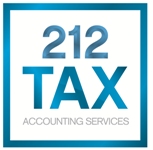Investing for retirement is a great way to plan ahead for your future, and the government has provided some great tax incentives for individuals who choose to do so. One of the best ways to take advantage of these incentives is through an Individual Retirement Account (IRA). While there are a variety of IRA plans to consider, the two most popular ones are the Roth IRA and the Traditional IRA. In this blog we will discuss the advantages and limitations for both plans so you have a better understanding of how they work.
Traditional IRA Advantages
The main advantage of a traditional IRA is that individuals can make pre-tax contributions to their account hence lowering their taxable income and possibly move into a lower tax bracket. In cases when you and/or your spouse are already covered by an employer retirement plan, contributions to an IRA may not be tax deductible. Anyone below the age of 70 ½ who has earned income during the year can open and contribute to traditional IRA. The most that can be contributed to an IRA during a tax year is $5,000 ($6,000 if you are over 50 years old). Traditional IRA contributions can be withdrawn after the age of 59 ½, at which point they are taxed as regular income. Early withdrawals are subject to a 10% penalty tax, except for in special situations where this penalty is waived.
Traditional IRA Disadvantages
Because contributions to Traditional IRAs are tax deductible, you must pay taxes on the entire amount(s) withdrawn. Another disadvantage of a Traditional IRA is that account holders are required to take minimum distributions and pay income tax once they reach age 70 ½. Also, the unpredictability of what tax rates are going to be in the future makes it difficult to measure the benefits of tax deferred income now.
Roth IRA Advantages
While contributions to a Roth IRA are not tax deductible, the main advantage is that principal and earnings grow tax-free. Once you have had a Roth IRA opened for more than five years, principal can be withdrawn at anytime without penalty. However, earnings on the principal can be subject to tax and penalty if withdrawn before the age of 59 ½. Also, Roth IRAs do not have a minimum withdrawal requirement after the age of 70 ½, unlike Traditional IRAs.
Roth IRA Disadvantages
Roth IRAs are not available to anyone. If your filing status is single, head of household or married filing separately, your modified Adjusted Gross Income (AGI) must be less than $120,000 in order to qualify. Married couples filing a joint return are limited to a modified AGI of less than $177,000.
Your tax or financial advisor can provide more details on what plans are best for you and what contributions you should make towards saving for retirement.


